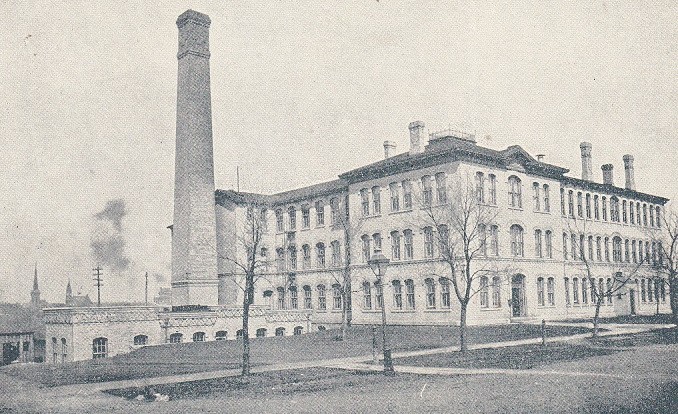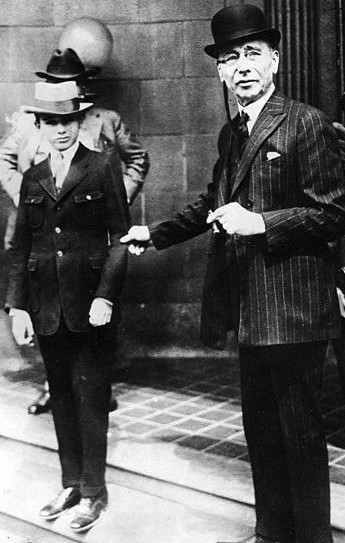The History of The Rockford Watch Company
On May 17th, 1901, the, Belvidere Daily Republican, headline read ‘THEY MEAN BUSINESS | Rejuvenated Watch Factory to Employ a Big Force’. The revived Rockford Watch Company owner, Jacob Franks, a Chicago businessman issued 10,000 shares, at $100 a share and confessed to big intentions. “We expect to employ about 3,000 hands and turn out about 600 movements a day. We shall have branch offices in Chicago, New York, Paris and Switzerland”, claimed Franks. They say – ‘life is stranger than fiction’ and the confident Mr. Franks had no idea of what was ahead – and just how low events, for himself, would eventually tumble.
The Rockford Watch Company, from Rockford, Illinois, was formed, in 1874, by three local businessmen, Hosmer P. Holland (a civil war veteran), Israel Sovereign (one of the city’s leading merchants in hardware and stoves), and George Troxell (a city politician) who together raised $150,000 capital, through 400 citizens, to realize their dream. Clark was in charge of construction of all machinery, to be used in the plant including hiring and training the work force plus initial start up of the production line. To get started, he brought in C.W. Parket and P.H. Wheeler – two of the, already established, Cornell Watch Company’s former employees as key personnel. In total – 57 Cornell employees were used to get the factory and machinery finalized.

The factory opened at 325 South Madison, Rockford, Illinois, near the Rock River, in 1876. Early on, producing 10 watches per day in 5 different mechanisms – business ramped up through the ’70’s and, by 1881, Rockford was producing 70 watches per day. With continual growth, ten years later, Rockford Watch Company became a significant industrial business in their region – even considering building a larger factory, however, competition from other watchmakers that were driving prices down, caused the brand to reduce production and briefly suspend operations. Blaming “the depression which has existed in the watch trade the last few years” the stockholders declared insolvency, in 1896, and eventually disposed of the all assets to pay off their debts and then distribute the remaining proceeds to their stock holders.
The Rockford Watch Company was sold, and reorganized, as The Rockford Watch Company, Ltd., in 1901, when Franks was summoned to re-establish the business and opened, again, as a subsidiary of the Illinois Watch Case Company, Elgin, Il – a manufacturer of watch cases. (There is no association between the Illinois Watch Case Co. and the Illinois Watch Company). The encouragement Jacobs depicted was short-lived. Prognosticating the future, a fire originated at the factory in a pile of polishing material, in the summer of 1903, causing considerable smoke and water damage. A few months later, a bolt of lightning struck the top of the factory causing brick to fall through and destroy the roof of the boiler house, while fragments of glass entered the machine room breaking most of the windows on the north side of the building. By 1904, the company laid off 75 factory workers stating “the layoff is due to depression in the watch trade and that the layoff is indefinite”. The Rockford Watch Co. ceased operations and closed its factory, in 1915, after manufacturing nearly 1 million jeweled, many railroad grade, watches – over a near 40 year period. (The factory still stands in the original site, to this day) To their credit – the company kept producing high quality watches throughout its existence regardless of their management.

Franks remained out of the local newspaper, until 1924, when his name suddenly made national news. In May, of that year, his son – 14 year old Bobby Franks was kidnapped and murdered by two wealthy students enrolled at the University of Chicago. Nathan Freudenthal Leopold Jr., aged 19, and Bobby’s cousin, Richard Albert Loeb, aged 20, committed the murder – characterized at the time as ‘The Crime of The Century’. The students spent seven months planning everything from the method of abduction to disposal of the body but, of course, mistakes were made. Leopold’s glasses dropped out of his pocket and were found near the body. Although common in prescription and frame, his glasses were fitted with an unusual hinge purchased by only three customers in the city of Chicago – a welcome lead for any detective. Eventually caught, the sentencing hearing, as both men pleaded guilty, became a media sensation lasting for 32 days. On September 10, 1924, both students were sentenced to life imprisonment – plus 99 years. Loeb was murdered by a fellow prisoner, in 1936; Leopold was released on parole, in 1958. Both Leopold and Loeb admitted that they were driven by their thrill-seeking delusions of wanting to commit the ‘perfect crime’, however, neither claimed to have looked forward to the killing. In the end, Leopold admitted interest in learning what it would feel like to be a murderer. He was disappointed, he noted, that in fact – he felt the same as ever.
London-born Jacob Franks died, on April 18th, 1928, at age 73, in Chicago, Illinois – with the weight of his loss, unrelenting.

